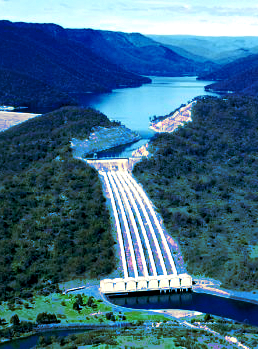Snowy delays mount
 Snowy Hydro has announced a delay of up to two years for its Snowy 2.0 pumped hydro storage project in New South Wales (NSW).
Snowy Hydro has announced a delay of up to two years for its Snowy 2.0 pumped hydro storage project in New South Wales (NSW).
The project also faces a cost blowout beyond the revised $5.9 billion estimate, according to reports this week.
The delay comes amidst concerns about the National Electricity Market's ability to continue providing reliable power as coal power stations accelerate their closure plans.
Commonwealth-owned Snowy Hydro says it is working to “reset” the timetable and budget for the project with key contractor Future Generation Joint Venture, controlled by Italy’s Webuild.
The COVID-19 pandemic, supply chain disruptions, and difficult geological conditions that have slowed tunnelling work at the site are cited as factors driving the delays and cost increases.
Snowy Hydro now expects “first power” from the project at the earliest between June and December 2027, but potentially as late as June to December 2028.
The full operation of all units will occur at the earliest in December 2028 but potentially as late as December 2029.
Snowy Hydro's new CEO, Dennis Barnes, admitted this week that the pumped-hydro battery project is facing years of delays due to the COVID-19 pandemic, global supply chains, inflation, and technical difficulties.
Greens Leader Adam Bandt argues the project should be “ditched”.
The project was the centrepiece of former-PM Malcolm Turnbull's climate change policy in 2017 and was costed at just $2 billion at the time. The last estimates had the project close to $6 billion.
The latest difficulty has seen Tunnel Boring Machine (TBM) Florence, one of three machines drilling tunnels to connect the project, at a standstill.
TBM Florence has reportedly been stuck in soft ground and unable to turn for four months after a 9-metre-deep hole opened above it. Snowy Hydro said the machine has still only dug around 150 metres of the 15-kilometre tunnel.
The Snowy 2.0 project should be connected to the grid via the HumeLink transmission line, a $3 billion project by NSW's Transgrid, which was slated to be operational by late 2026, ahead of Snowy Hydro coming online. Now, the NSW project is also facing doubts.
The delays of Snowy 2.0 and Kurri Kurri gas plant highlight the “urgent” need to accelerate the rollout of backup capacity to avoid the risk of blackouts later this decade, according to Daniel Westerman, chief executive of the Australian Energy Market Operator (AEMO). “Urgent and ongoing investment in renewable energy, long-duration storage, and transmission is needed to reliably meet demand from Australian homes and businesses,” he says.








 Print
Print